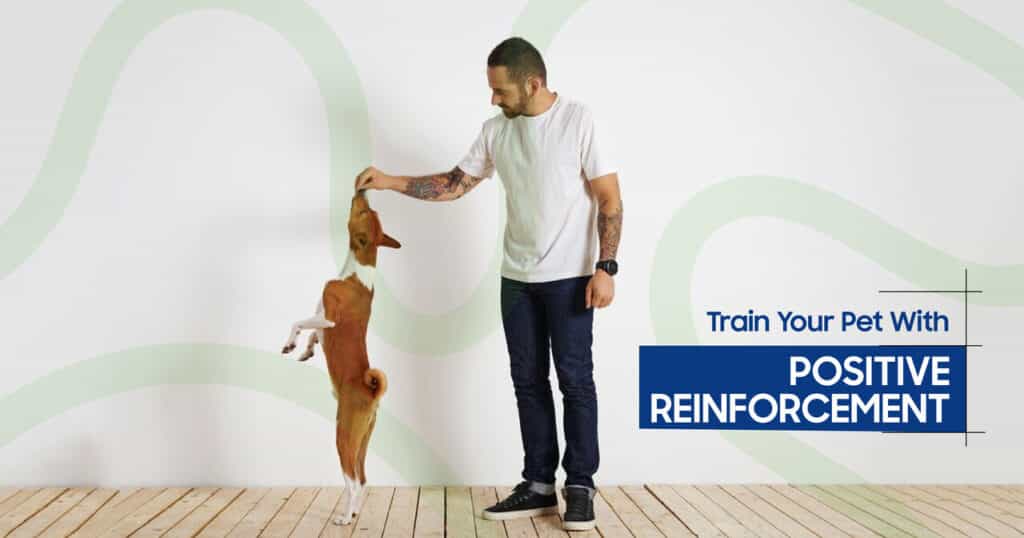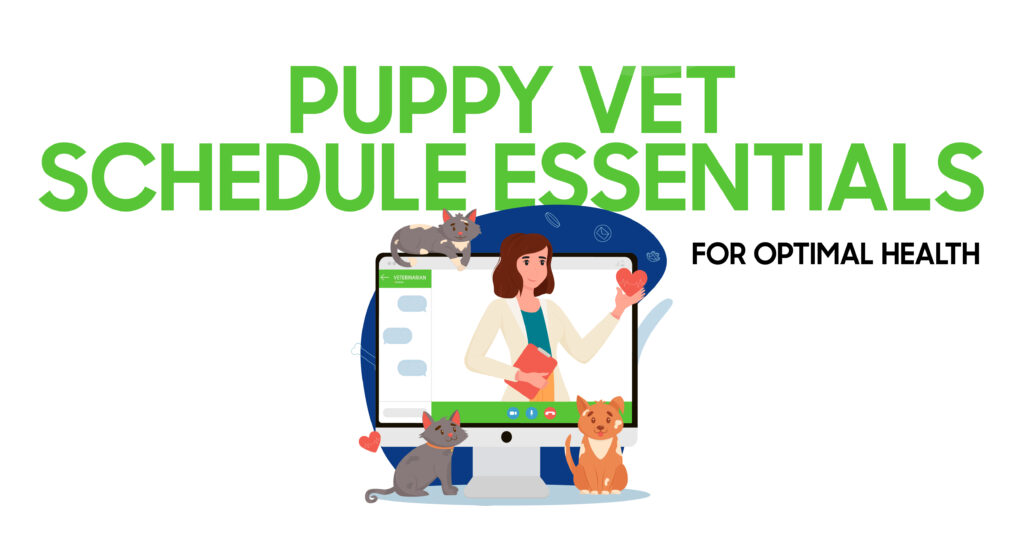Pet training is extremely rewarding work that helps significantly in building a close relationship with your furry friend. Ever since its discovery, positive reinforcement has emerged as one of the highly effective and well-known training methods for pets. The effectiveness of positive reinforcement depends on your pet’s early training regarding their first few commands up to correcting various behavioral problems seen in an older dog.
In this blog post, we will be talking about pet training basics, discussing techniques of pet behavior training, share puppy training tips, and even touch upon incorporating pet trainingactivities for mental stimulation and fun. Let’s get started!
How to Train Your Dog With Positive Reinforcement
Positive reinforcement is a powerful tool that any pet owner can have at his or her disposal. The basis of this is rewarding good behavior, which leads to repetition by the pet. It is an efficient and healthy means of developing trust between you and your pet. In this section, we will detail how to use positive reinforcement in pet training.
Why Positive Reinforcement Works
Positive reinforcement’s power is based on your ability to tap into your pet’s desire to please you and receive rewards. Providing something immediate, something your pet enjoys – their favorite treat, praise from them, or a favorite toy behavior – after executing it will start associating it with something positive within the pet. This should, in turn, encourage and continue the behavior. Throughout this process, consistent rewards lead to the formation of habits.
Starting With Basic Commands
When you start, you should start with basic orders. These would be:
- Sit
- Stay
- Come
- Down
Each time your pet responds to a correct cue, reward them. For example, when your dog is sitting on command, provide them with a treat or affection immediately. Such training gives the learner a strong foundation that can make your pet continuously obey the command.
Using Rewards Effectively
Rewards form the core component of pet behavior training. The idea here is to reward the behavior that your pet would enjoy doing. Different pets like different rewards, some take well to treats, some will even be content with a little praise, and others prefer their toys. So, one must understand their pet and how best they could respond to them. Again, one major determinant in the success of rewards is its timing. The pet does not relate to when the prize came early or when it arrived late.
Keeping Sessions Short and Sweet
Shorter is better, especially when doing puppy training. Dogs and puppies have such short attention spans. Setting your sights on 5 to 10 minutes several times a day is a good way to handle this. Overloading information or forcing your pet into prolonged training sessions would be frustrating for you and your pet.
Get Everyone Involved
It’s not something you train one person to do. The whole household should be engaged. That, after all, is the secret to consistency and success. Here’s why you should have several people participate in the process.
Consistency Across the Family
If different family members use different commands or reward behaviors inconsistently, then that can confuse your pet. But if everyone uses the same commands and reinforcement methods, then things would be clearer for your pet to learn.
All family members should use the same word and tone of voice when working on a command like “sit.” If some say “sit” and others say “sit down,” then there will be confusion. Consistency makes the training easier.
Shared Responsibility in Training
Whether you have a dog, puppy, or kitten, everyone should share the responsibility of training your pet. When you incorporate different people into training sessions, your pet will learn to respond to various voices and interact with different family members. This is particularly important for socialization, as it helps your pet become more comfortable with different situations and environments.
Establish Communication
This will make dog training much more than just teaching it. It will also entail getting to understand them better. Communicating with your pet allows them to realize exactly what’s being expected and how it could earn those rewards.
Clear Cues
Clear cues are the way to pet training. Your cues can be verbal, for example, saying “sit” or “stay,” or you can use non-verbal cues, such as hand gestures. However, the thing is that whatever you have chosen, your cues need to be consistent. This mixing of signals confuses your pet about what they are supposed to do for you.
For example, while some give the gesture of “a sit” hand signal, others may use vocal commands. When you keep strict cues for each specific command, confusion is avoided.
Understanding Your Pet’s Body Language
Not only verbal cues, but attention to body language is required. Dogs and cats are so intuitive, and they communicate often in ways other than through words. For example, knowing your pet is confused, anxious, or excited will guide your training.
For example, if your dog exhibits signs of discomfort, it’s time to end the training for the day. If your pet gets excited after receiving a reward, that means they have connected the behavior with the reward, which is an indication that the training is successful.
Use It for a Variety of Behaviors
Positive reinforcement is one of the most commonly used tools in teaching behaviors of a wide diversity of kinds. From basic commands to behavioral problems, this can be expected to adapt to virtually any situation.
Training Basic Commands and Tricks
Beyond the basics of puppy training, such as sit and stay, you can use positive reinforcement to teach your pet fun tricks like these:
- Shake hands
- Roll over
- Play dead
These tricks will further your bond with your pet and provide them with much-needed mental stimulation.
Addressing Behavioral Issues
Another modification through positive reinforcement is that one can change unwanted behaviors. For instance, if your dog is a jumper of guests, you may reward him by sitting calmly instead. This way, by rewarding the desired behavior rather than punishing the unwanted one, one is in fact helping his or her pet learn better and a more favorable atmosphere within the household is created.
Offer Mental Stimulation
While teaching your pet new commands is essential, mental stimulation is equally crucial. Dogs, especially puppies, need challenges that stimulate their minds.
| Interactive Pet Training Games | Using games in pet training gives them mental and physical stimulation. Many different tools, such as the pet training game Flash, will keep your dog or puppy busy while also letting them learn in a fun and interactive way. In this case, the main issue is when they try to figure out how to obtain the reward. |
| Training Through Play | You can use games such as fetch or tug-of-war to train. These games are fun but offer a good platform to teach impulse control as well as strengthen the bond between you and your pet. |
Keep It Fun
Training does not have to be boring. The more you create a lighthearted atmosphere surrounding the process, the more your pet will enjoy it. Fun training sessions also help your pet remain focused and motivated.
Short, Engaging Sessions
Training doesn’t have to be long or tedious. Instead of forcing your pet to work for long periods, keep sessions short but engaging. A 5-10-minute session, repeated a few times a day, is much more effective than one long session.
Strengthen Your Bond
Positive reinforcement isn’t just training your pet, it’s almost an opportunity to deepen a bond. This encourages the trust aspect between you and your pet and deepens that positive connection.
Building Trust and Communication
You’re going to teach them but also help make them trust you a little better because by doing good things, they’re rewarded for it, they learn how to associate what you want from them with the result of having listened to you, and then they’ll look towards you for things.
Problems and Proofing Behavior
As your pet masters their commands, you’ll need to ensure that the behaviors stick. This section is about proofing those behaviors.
Generalization
Proofing behavior means that your pet can do the behavior outside of the training session and not only during training sessions. For example, can your dog sit on command in a noisy park or around other pets? The constant exposure to these different environments helps the behaviors become fixed.
Correcting Regression
Sometimes, pets fall into their old habits. Stay calm if your pet falls back. Move back to the fundamentals and use minimal reward items again to encourage the right behaviors. Long-term results will only be sustained with consistency.
Call to Action
It is very entertaining and rewarding to train your pet using positive reinforcement. Applying consistency, clear communication, and making the training enjoyable will help you teach your dog new skills, modify undesirable behaviors, and strengthen the bond you have with the pet.
Are you ready to begin this journey? Well, let’s get on with how to train a puppy or get better pet behavior training with a mature dog. Positive reinforcement is how it’s done. Start today and observe how developing a deeper, more trusting relationship with your companion is something to enjoy.
FAQs
-
What is positive reinforcement in pet training?
Positive reinforcement in pet training means rewarding good behavior with treats or praise and encouraging your pet to repeat those behaviors.
-
Can positive reinforcement fix bad behavior?
Yes! Pet behavior training with positive reinforcement encourages your pet to replace bad behavior with good by rewarding desired actions.
-
How do I start puppy training with positive reinforcement?
Begin puppy training by rewarding simple commands like “sit” and “stay” with treats or praise. Keep sessions short and fun.
-
How long before I see results in positive reinforcement?
Depending on consistency and your pet’s learning pace, you may see improvements in a few days to weeks.
-
Are there any tools to help with positive reinforcement training?
Yes! Pet training game flash activities and puzzle toys can enhance pet training, offering mental stimulation and rewarding your pet for solving challenges.






